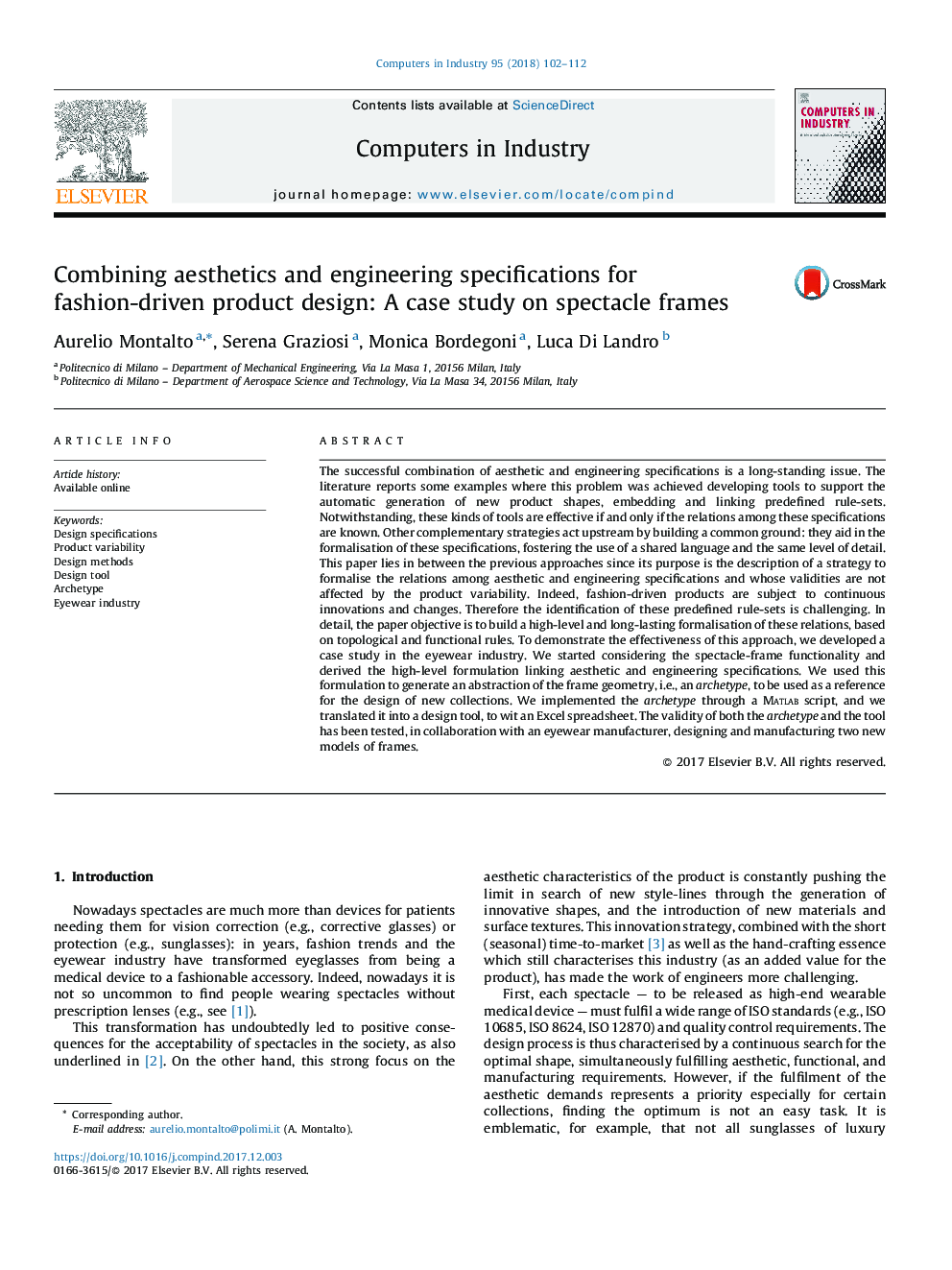| Article ID | Journal | Published Year | Pages | File Type |
|---|---|---|---|---|
| 6923970 | Computers in Industry | 2018 | 11 Pages |
Abstract
The successful combination of aesthetic and engineering specifications is a long-standing issue. The literature reports some examples where this problem was achieved developing tools to support the automatic generation of new product shapes, embedding and linking predefined rule-sets. Notwithstanding, these kinds of tools are effective if and only if the relations among these specifications are known. Other complementary strategies act upstream by building a common ground: they aid in the formalisation of these specifications, fostering the use of a shared language and the same level of detail. This paper lies in between the previous approaches since its purpose is the description of a strategy to formalise the relations among aesthetic and engineering specifications and whose validities are not affected by the product variability. Indeed, fashion-driven products are subject to continuous innovations and changes. Therefore the identification of these predefined rule-sets is challenging. In detail, the paper objective is to build a high-level and long-lasting formalisation of these relations, based on topological and functional rules. To demonstrate the effectiveness of this approach, we developed a case study in the eyewear industry. We started considering the spectacle-frame functionality and derived the high-level formulation linking aesthetic and engineering specifications. We used this formulation to generate an abstraction of the frame geometry, i.e., an archetype, to be used as a reference for the design of new collections. We implemented the archetype through a Matlab script, and we translated it into a design tool, to wit an Excel spreadsheet. The validity of both the archetype and the tool has been tested, in collaboration with an eyewear manufacturer, designing and manufacturing two new models of frames.
Related Topics
Physical Sciences and Engineering
Computer Science
Computer Science Applications
Authors
Aurelio Montalto, Serena Graziosi, Monica Bordegoni, Luca Di Landro,
